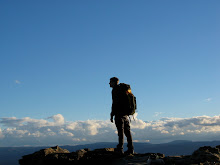Students and families, I hope that each and every one of you has a happy holiday! We will continue our learning after the winter break. Also, congratulations on being done Mater and Chemical Change (at least until the Provincial Achievement Test in Spring)!
Sincerely,
Mr. Mang
NOTE: I WILL NOT BE RESPONDING TO EMAIL UNTIL JANUARY 8TH
For your interest, the day I'm posting this message is the shortest day of the year (December 21st) a day called the winter solstice. What does this mean scientifically? It means because of the earths tilt (23.5) degrees and where the earth is in its orbit around the sun, the suns' rays actually hit earth most directly at 23.5 degrees South Latitude on this day; that is why we have summer in the Southern Hemisphere right now and winter in the Northern Hemisphere. As the winter progresses, the day will actually lengthen (in terms of hours of light vs hours of dark) and the suns rays will gradually hit the norther hemisphere more directly. On March 21, the suns rays will hit the equator most directly and humans will experience 12 hours of light and 12 hours of darkness in almost every habitable place on our planet; that is why we call this day the equinox (more specifically the vernal equinox). The day keeps getting longer until the first official day of summer (June 21) when the suns rays hit 23.5 degrees North latitude most directly (the tropic of Cancer). If you read this paragraph and understood it... well done!
Monday, December 21, 2009
Friday, December 11, 2009
As the snow falls and the days continue to get shorter (until Dec. 21), we rapidly approach our Unit Final which will be on Tuesday, December 15th. Please begin to prepare for this important evaluation of your learning! Just a quick learning moment: on Dec. 21 our winter will officially begin (yes its actually still fall or autumn) and from that day onwards to June 21, the day length will be increasing gradually. After June 21 the day length gradually decreases again...
This week:
This week:
- Finished our unit (read it again if you already have done so)
- Began our Unit Review booklet; reminder if you do the section review and 1 check and reflect you can earn bonus marks; all review work is due on Tuesday, December 15th
- Learned more about Climate Change and the Copenhagen Climate Conference
- Wrote two quizzes: one on periodic table skills and one on basic chemistry knowledge
STUDY TIPS:
- Re read the textbook
- Complete all assigned review work...and more if you want a bonus mark
- Try www.edquest.ca for practice quizzes, notes and more!
- Review the "naming/formula writing" cheat sheet and other work we have completed
- Work with a partner and test each other on basic chemistry knowledge
- Ensure you know how to calculate the number of neutrons from the mass number and atomic number
Wednesday, December 2, 2009
COMPOUNDS...A COMBINATION OF ELEMENTS BONDED TOGHETHER THROUGH CHEMICAL BONDS
 The diagram above shows Sodium Chloride being formed by the exchange of one electron. Notice that once the chlorine and sodium ions bond, the net charge becomes 0. What is a chemical bond? It is the bond formed between different elements share or exhange electrons which essentially "bonds" them together!
The diagram above shows Sodium Chloride being formed by the exchange of one electron. Notice that once the chlorine and sodium ions bond, the net charge becomes 0. What is a chemical bond? It is the bond formed between different elements share or exhange electrons which essentially "bonds" them together! * This week we learned the important concept that compounds are formed when chemical reactions occur. We also learned that when chemical reactions occur, electrons are exchanged (ionic compound) or are shared (molecular compounds) between the elements in a compound. We also reviewed the idea that in a mixture, there is no chemical bonds between the different substances.
WORK THIS WEEK:
Reading: Be sure you have read up to the end of section 3.0!
Questions: Complete check and reflect questions on page 149 and 153 (all questions) and also the Assess your Learning (section review) questions, 1-12 only
Vocab: Complete the new vocabulary #8
WORK DUE THURSDAY: All check and reflect questions (pg 149/153) and Assess your Learning #1-12 page 154/155.
Subscribe to:
Posts (Atom)
